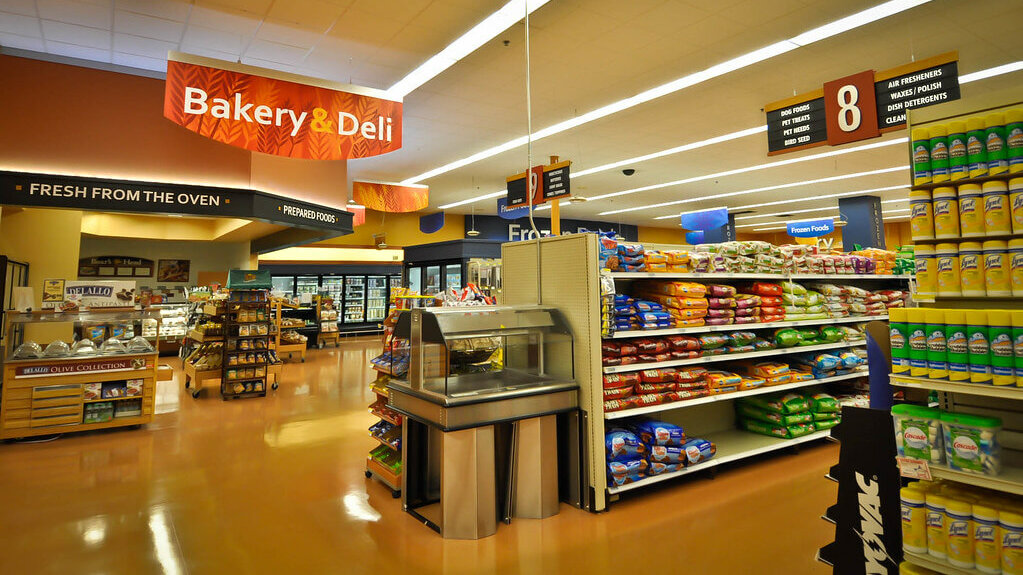A stunning natural backdrop, exquisite mountains, pristine forestlands, estuarine rivers, a flourishing business community, vibrant culture, and highly ranked schools is all that Vermont, the Republic of New Connecticut, is known for. So, what is the cost of living in Vermont?

Well, Vermont doesn’t have an affordable cost of living. The state has been ranked #39 in the affordability rankings by the US news and World report, 2022. Then, why are so many people moving to VT? The green mountain state has a lot to offer – The best healthcare, education system, great outdoors, transportation, competitive housing prices, and more. In addition to that, WalletHub has ranked Vermont as the #3 best state to raise children and the #2 safest state in the US. But will your pocket allow you to live in such a prosperous state?
To help you decide, we have brought to you the living cost expenses in Vermont in detail. So have a look!
Does Vermont have a low cost of living?
The overall living cost in Vermont is 116 which is 16% higher than the US average. The cost of living indexes categories like groceries (12% higher), healthcare (8% higher), utilities (32% higher), transportation (8% higher), and housing cost (27% higher) than the national average.
What’s the cheapest area to live in Vermont?
The cheapest area having the lowest cost of living in Vermont is West Brattleboro. Having a population of 3000+ people, the area’s housing costs are 4% less than the US average. Besides that, the town’s rental costs also remain on the lower side than the national average.
[elementor-template id=”13247″]
Cost Of Living in Vermont
Vermont’s living cost is above-average when compared with residing in pricey New York and Massachusetts. According to BEA, the average cost of living for a single individual in Vermont in 2022 is about $49,500 per annum. So, how will you divide your salary from your everyday expenses? Let us figure out the monthly consumption incidentals of an individual from the vital cost of living indices in Vermont.
Groceries Prices in Vermont
Food is another common expense that has a substantial impact on a region’s overall cost of living. In Vermont, the average annual food expenditure for a single adult is $3,835 while the average expenditure for a family of four is $11,076. These estimations are based on a nutritionally appropriate diet consisting of foods that were bought at a grocery shop and prepared at home.

In terms of grocery prices, Burlington, the largest city in Vermont, is actually in second place when compared to other significant New England cities. The cost of food in the nation’s main cities is ranked by the Council for Community and Economic Research.
Are groceries expensive in Vermont?
Groceries are very expensive in Vermont. According to a recent study, Vermont ranks 2nd highest in the country for grocery and food costs after Hawaii.
How much are groceries in Vermont?
The average grocery cost in Vermont is estimated to be $495 per month.
How much should I budget for groceries in Vermont?
To meet grocery expenses, you have to make a budget of at least $520 per month. This approximates about $6500 per annum for grocery and related expenses.
Price Of Utilities in Vermont
The state of Vermont has higher-than-average utility expenditures due in part to its harsh winters and soggy springs as compared to the rest of the country. A large portion of Vermont’s cost of living goes toward utilities, so potential homebuyers should exercise caution.

Despite the high utility rates, Vermont leads the country in the production of renewable energy. The state promised that by the year 2050, at least 90% of the energy it uses will come from renewable sources. As a result, even if the bill is a little high, you may be certain about the source of the energy.
| Utility | Average Vermont Bill |
| Electricity | $100 |
| Gas | $110.43 |
| Cable & Internet | $125 |
| Water | $45 |
Source: https://www.burlingtonvt.gov/sites/default/files/LeadProgram/RENTINGinVERMONT.pdf
How expensive are utilities in Vermont?
Utility expenses in Vermont are $380 per month i.e. 20% higher than the national average. Monthly utility costs include electricity, water, garbage, and heating and cooling costs of an apartment.
How much is the electric bill in Vermont?
The average monthly electricity bill in a residential apartment in Vermont is about $100.
How much water and sewer a month in Vermont?
The average monthly water and sewer bill in Vermont is $45 per 1000 cubic feet and $9.50 per 1000 gallons respectively.
Cost For Healthcare in Vermont
The growth in healthcare spending in Vermont has surpassed that of the rest of the nation over the previous 20 years. The most recent personal consumption expenditures data from the BEA estimates that Vermonter spends $10,550 per year on healthcare. When compared to the rest of the country, Vermont’s typical healthcare expenses are on the higher end of the spectrum. When compared to its neighbors in the New England region, they are around average.

Families must pay for childcare, despite the fact that rates can vary depending on the kind of care you need. For both newborns and toddlers, family child care in the home in Vermont is actually less expensive than a daycare in a classroom.
Is Vermont healthcare more expensive?
Vermont’s healthcare expenses remain just less than the national average i.e. $10,550 per individual.
Is health care free in Vermont?
Healthcare is not free in Vermont. Vermonters have to apply for Medicaid or Obama care to avail low cost or free health coverage.
How much does Obamacare cost in Vermont?
The monthly health premium of the Obamacare insurance plan in 2022 ranges from $571(lowest level bronze plan and $1008 (highest experience platinum plan).
[elementor-template id=”13257″]
Vermont Home Prices
Vermonter has to make almost twice as much as they do an hourly income to afford a safe and acceptable place to live. The average cost of housing in Vermont is 11.5% less than the national average.

The typical sales price of an existing home in the United States is $353,900, while the average home in Vermont will cost $314,562. The median mortgage and rent prices for Vermont residents are as follows:
| Type of house | Typical Price |
| Monthly mortgage cost | $1,621 |
| Studio rent | $794 |
| One-bedroom rent | $825 |
| Two-bedroom rent | $1,127 |
| Three-bedroom rent | $1,161 |
| Four-bedroom rent | $1,390 |
| Median gross rent | $980 |
Source: https://www.burlingtonvt.gov/sites/default/files/LeadProgram/RENTINGinVERMONT.pdf
What is the average cost of a house in Vermont?
The average cost of a house in Vermont is $314,562. The median housing cost in Vermont is 11.5% less than the national average.
Which Vermont island is the cheapest to buy a house?
Fishing creek island in Vermont has affordable houses available for sale starting from $200,000.
Will Vermont home prices drop?
Since 2021, Vermont’s housing prices have witnessed a substantial trend towards the higher side and have continued throughout 2022. The median home selling price in 2021 was $422,150. The price has increased by 17% in the year 2022 and had become $450,000.
Education in Vermont
Public and private schools- the University of Vermont, the Vermont State Institutions, private colleges, and secondary and primary schools, comprise Vermont’s educational system. Vermont has the best student-teacher ratio in the nation and a friendly educational environment. The student may enroll in the high school run by the new district of residence if they move to a different school district.

Vermont was previously regarded as one of the states with the best educational systems in the nation. Now its public schools are being acknowledged for their contributions. According to the personal finance website WalletHub, the state was in the top 10 states with the best public school systems in 2021.
Is education free in Vermont?
Vermont’s higher educational institutions and universities provide free or low-cost tuition fees. These are for those students who have a family income below $150,000 and households who remain below the federal poverty line.
Is college cheaper in Vermont?
Colleges in Vermont are so affordable that some of them charge tuition fees of less than $10,000 per annum.
Are universities in Vermont expensive?
The top universities of Vermont like the University of Vermont and Middlebury College are expensive universities of Vermont. These universities charge an average of $55,000 per annum for various courses every year.
Vermont Tax Rates
The highest income category in Vermont’s graduated income tax system has an upper limit of 8.75%. When it comes to income taxes, Vermont stands at #8 in the country.

The State Individual Income Tax Rates and Brackets for 2021 report from the Tax Foundation classified Vermont as having the #4 greatest tax burden, with an effective tax rate of 12.3%. Remember that the term “tax burden” refers to the total amount of taxes reported to the U.S. Census Bureau, including but not limited to income, estate, and property taxes.
Is tax cheaper in Vermont?
Income and local taxes in Vermont are 10.3% which remains on the higher side than the national average.
Are taxes higher in Florida or Vermont?
Vermonters pay more taxes on average than Floridians. While Vermonters pay an income tax rate of 6% to 8.5%, Floridians pay an income tax of about 5.50%.
Vermont Public Transportation
Vermonters travel at a high speed, and real Vermonters are aware that the travel time between towns is measured in hours rather than miles. Therefore, it’s probably a good thing that transportation expenses in Vermont are reasonable. In fact, when it comes to auto insurance, US News ranked Vermont as the 8th cheapest state in the union.

Vermont’s small population and dispersed villages are the reason behind the state’s less traffic. The fewer hours spent stuck in traffic contribute significantly to lower transportation expenditures.
How much does transportation cost in Vermont?
A single individual spends about $10,850 per annum on transportation costs in Vermont. However, for a public transport ride, an individual in Vermont pays an average of $80 per day.
How much do bus rides cost in Vermont?
Costs of public transport (Bus rides) in Vermont are as follows:
| Type of fare | Fare cost (per day) |
| Individual fare | $1.00 (adult) |
| 10-days fare pass | $9.00 (adult) |
| 30-days fare pass | $33.00 (adult) |
Source: https://www.burlingtonvt.gov/sites/default/files/BAC_MPA_Transport%20Report.pdf
[elementor-template id=”13242″]
Average Cost For Energy & Fuels
Vermont has the lowest overall energy consumption of all the US states. The largest percentages of these two fuels in any state are used to heat homes in Vermont, where almost 60% of households use petroleum products and 13% use wood. Moreover, one-third of Vermont’s students attend schools with wood-heated facilities.

Vermont produced more electricity from renewable sources than any other state in 2020, at around 100%. Approximately 58% of Vermont’s utility-scale domestic generation was produced by traditional hydroelectricity.
What are the fuel prices in Vermont?
The average regular fuel costs in Vermont in 2022 range between $3.6 and $4.8.
Why are gas prices so high in Vermont?
Gas prices in Vermont have risen by 54% because the economy of the nation is recovering from the pandemic and a longer time increase in demand for oil and gases is shooting high levels.
Miscellaneous Things in Vermont
Vermont isn’t the most costly state in its region that attracts residents from other states, particularly those who reside in expensive Massachusetts and New York.

Let’s look at the prices of some of the most popular attractions in the Green Mountain State in addition to the routine daily expenses:
| Types | Average cost |
| 2 lb extra sharp cheddar cheese wheel | $22.95 |
| 1 gallon jug of Vermont Maple Syrup | $55 – $63 |
| Unlimited adult season pass to Mt. Killington. | $969 – $1,479 |
| 16 oz pint of Ben & Jerry’s ice cream. | $8.50 |
| Brewery tour in Burlington. | $80 – $90 |
| Men’s classic flannel shirt from the Vermont Flannel Company. | $68.80 – $84.80 |
Source: https://rules.house.gov/sites/democrats.rules.house.gov/files/BILLS-117HR2471SA-RCP-117-35.pdf
Cost Of Living in Vermont FAQs
Is Vermont expensive to retire in?
Vermont is a relatively costliest state to retire in. The rental costs, taxes, goods and services, healthcare, groceries, and utilities are 5% to 17% more expensive than the US average. Moreover, getting house ownership in Vermont is very expensive to deal with.
Despite everything, retirees who enjoy an active lifestyle find Vermont to be an ideal state for retirement.
How much does it cost to live in Missouri per year?
The cost of living in Missouri for a single individual is $12,000 per annum and for a family of four is $104,400 per annum. These costs are comparatively less than the national average i.e $18,000 for a single person and $132,000 for a family of four.
What are the benefits of living in Vermont?
The benefits of living in Vermont are as follows:
- exceptional neighborhoods
- simple and healthy lifestyle
- best healthcare facilities
- great recreation experiences
- best outdoor environment
- affordable and Best elementary schools in Vermont as well as colleges.
Conclusion
Considering everything, the cost of living in Vermont is a bit expensive but not so high as compared to other New England states. The prices of the main components of the cost of living: housing, healthcare, food, groceries, utilities, etc are the same for everyone.
As long as your income is within the average income range in the state, you can afford to live a standard lifestyle in Vermont. Also depending on spending habits, situation, and living area, you can make some adjustments and save money for unexpected expenses.
Vermont has something to offer everyone. Despite having expensive living costs, it is home to nature lovers, and those who want a cozy destination to live in.
For travelers, it’s a nice destination to spend their vacations. They can explore top attractions like Lake Champlain, Stowe Recreation Path, Burlington Bike Path, and more; remaining away from restricted places and abandoned barns in Vermont.
[elementor-template id=”13252″]